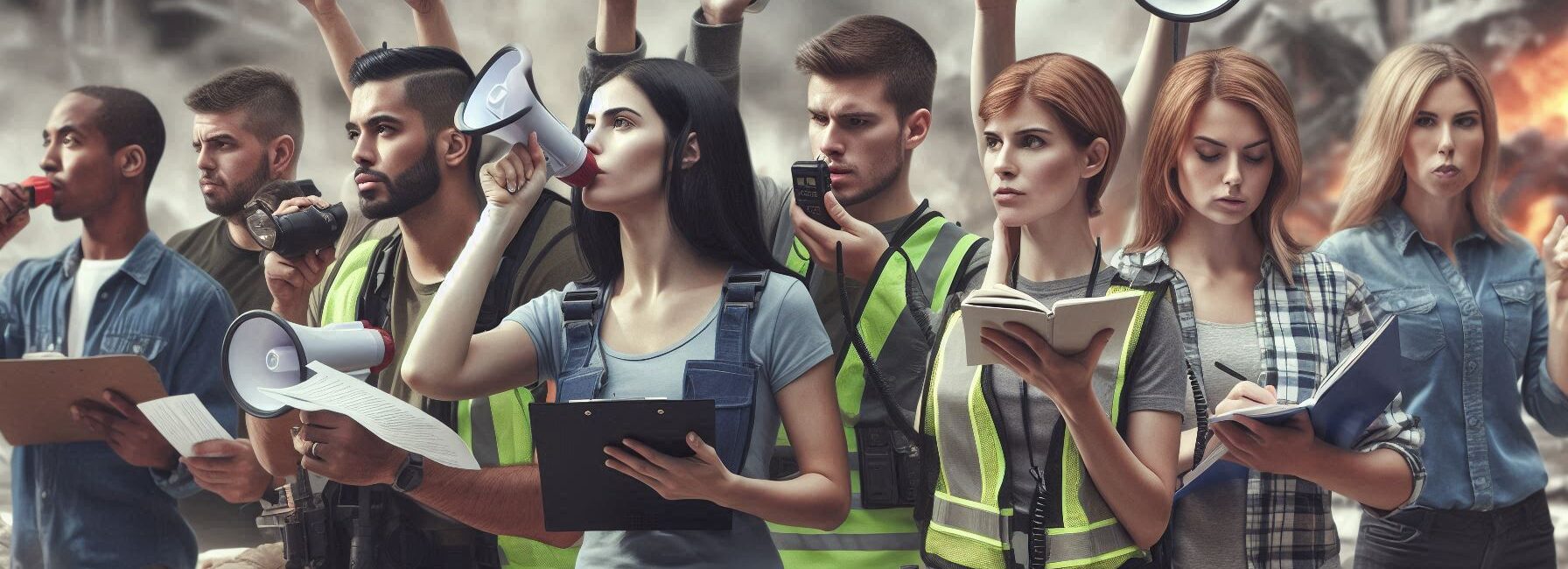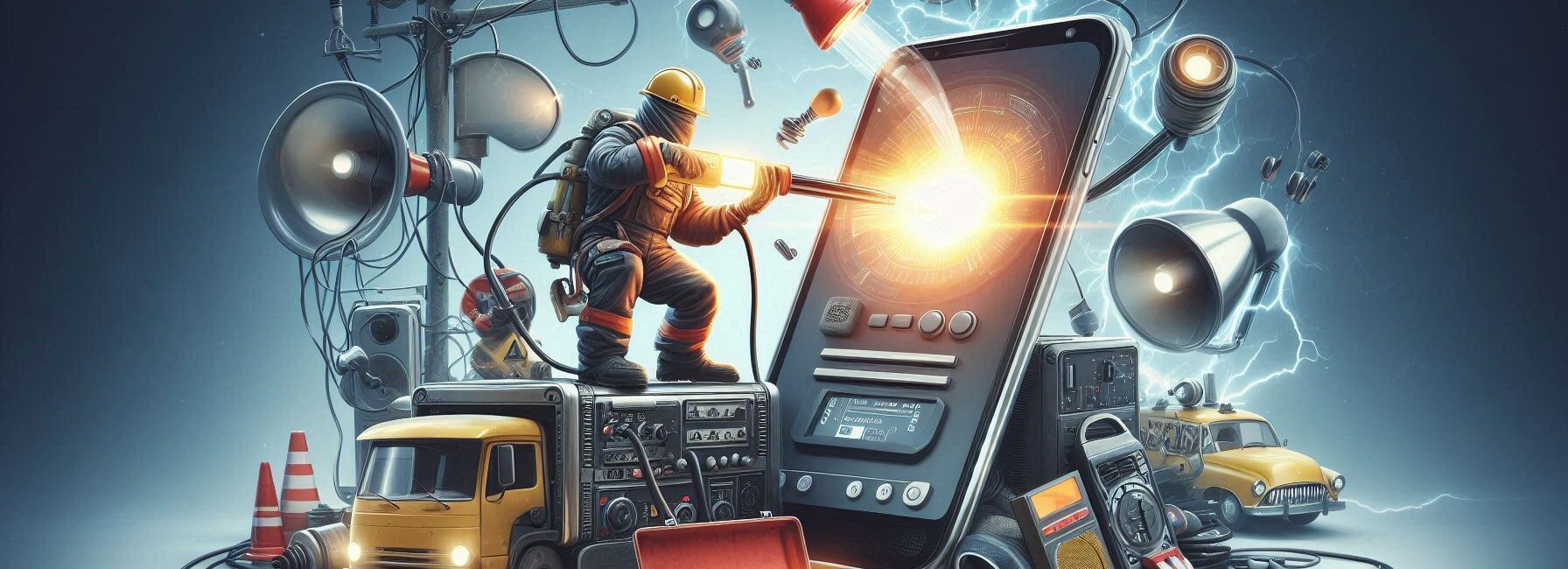Please Note: This post may contain affiliate links. If you click one of them, we may receive a commission at no extra cost to you. As an Amazon Associate, I earn from qualifying purchases.
Last Updated on November 2, 2025 by Kevin Collier
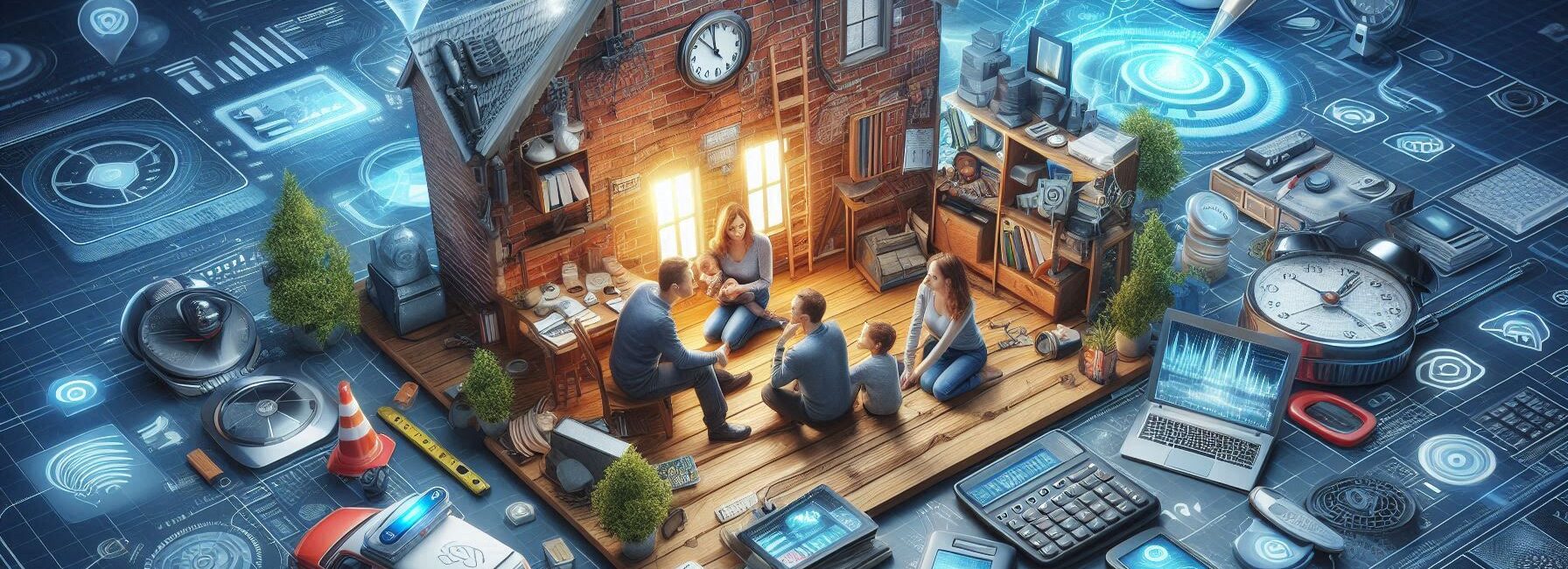
Top Takeaways and Key Concepts
- Create a family communication plan using calls, texts, or apps for emergencies.
- Make a master contact list of family, neighbors, and local emergency services.
- Establish clear meeting locations near home and farther away for safety.
- Assign roles based on age, skills, and who stays calm under pressure.
- Practice drills regularly and review plans to improve clarity and effectiveness.
You know, life seems to fly by these days, right? One moment everything is fine, and the next, you’re dealing with a thunderstorm or Uncle Bob's questionable cooking experiments. Having a family emergency communication system is kind of like knowing where the fire extinguisher is when Aunt Edna brings her famous flaming casserole. Super helpful!
When something unexpected happens—a power outage, a big storm, or just the usual madness of family life—having a plan can really help. It can keep everyone calm instead of running around like a headless chicken. Trust me, that chaos is no fun.
First step, let’s figure out how everyone can reach each other. Think about using group chats or apps. It’s nice to know you can send a quick text, even if the power goes out. Just remember, not everyone loves technology. Uncle Bob might prefer smoke signals (we all have that one relative).
Next, pick a safe spot where everyone will meet if things go really sideways. Maybe it’s a neighbor’s house or the big tree at the park. Having a specific place can help everyone feel a bit more secure.
Practice makes perfect. Gather the family and go over the plan. It feels silly at first, but it helps! You can even make it fun. Like a little game. Who knows? You could make it a family tradition.
Keeping everyone informed is key. Have a system for updates. Share info about what’s happening and what everyone should do next. It keeps everyone in the loop, so nobody’s wondering if it’s time to panic or just chill.
Lastly, it’s good to stay calm. Take a deep breath if something happens. Talk to each other, and remember, you’ve got a plan. That’s the best part. You’re ready for anything, even if it’s just Uncle Bob’s latest kitchen disaster!
Assessing Your Family's Needs
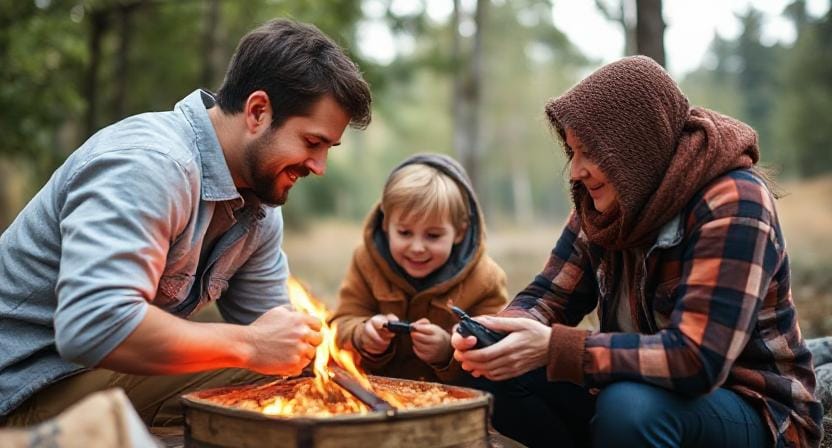
*** Shop for Survival Gear - Tools - Kits ***
Survival Gear - Bags and Backpacks - Knives - Boots/Footwear - Communication
Outdoor Cooking - Gloves - Hydration - Dry Boxes - Water Filtration Systems
Tents - Sleeping Bags - First Aid Kits - Multi-Tools - Flashlights - Fire Starters
Navigation - Survival Food - Night Vision - Headlamps - Stun Guns - Binoculars
Before you go out and buy walkie-talkies (which are really cool but might not be useful), think about what your family really needs.
1. Find out who in your family tends to freak out. Let's be honest: if there's ever an emergency, someone is probably going to go crazy about whether or not they left the stove on. Give people jobs based on who can stay calm under duress and who might start yelling about the end of the world.
2. Consider About Ages and Skills: If you have kids, consider about how old they are and how good they are with technology. A toddler might not understand that texting is important in an emergency, but your adolescent will probably try to Instagram live-stream the whole incident since nothing shouts “help” like going viral!
3. Check out the places: Where do most people spend their time? Your strategy should be based on where everyone will be most of the time. For example, if Dad is at work, Mom is at home fighting laundry monsters, and Junior is at school trying to avoid math homework.
4. Plan for Different Situations: What kinds of emergencies could happen? Floods? What about earthquakes? Or maybe it's simply another one of those last-minute family outings where no one knows how to read a map anymore? Each situation calls for a slightly different way of talking to people.
Deciding How to Talk to People
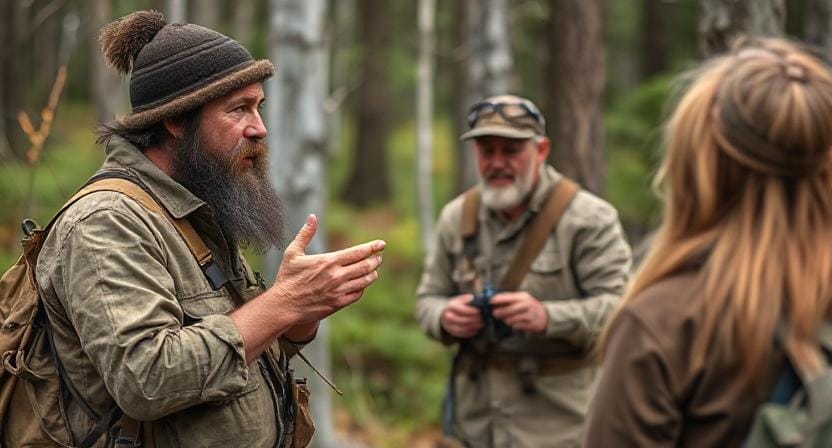
After you've figured out what your family needs, it's time to decide how you'll talk to each other in an emergency. I mean, carrier pigeons would be great, but they aren't that dependable.
1. Cell Phones Are Key: In our digital age, cell phones are important for talking to people, but don't forget about dead batteries! Put away portable chargers for everyone since nothing is worse than realizing your phone died when you needed it most.
2. Texting vs. Calling: When things are crazy (like when Aunt Edna comes up again), text messages can be better than calling because you don't have to wait for busy signals or worry about dropped calls because of terrible reception.
3. Two-way radios: If you have a big family or live in a rural region where cell service isn't always good (I'm looking at you, countryside!), two-way radios can help you talk to each other without using cellular networks. Plus, they make you feel like secret spies!
4. Social Media Groups: Set up private groups on sites like Facebook or WhatsApp so that family members may get updates right away in case of an emergency. Just keep in mind that Grandma might post cat memes instead of important information.
Making Lists Of Contacts
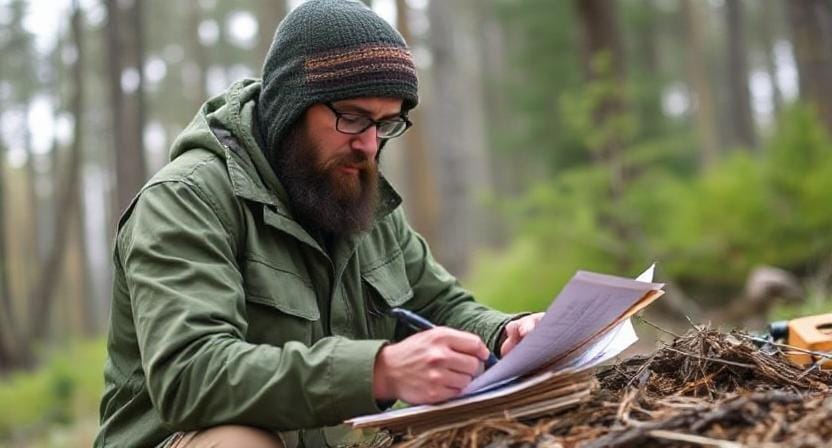
You could be thinking that all of this sounds fantastic, but where do I start? Let's speak about contact lists!
1. Centralized Information: Make a master list of key numbers, like the phone numbers of family members, neighbors, and local authorities. Anything that might be useful! This way, no one has to run about outdoors in a panic looking for Aunt Sue's number.
2. Give Out Copies: Make sure everyone in the family can see this list. You may place them in wallets or post them on the fridge next to the pizza leftovers from last week (you know what I mean).
3. Numbers for emergency services: Don't forget to write down the numbers for local emergency services! It appears clear until you need help and can only think of Uncle Bob's favorite pizza place instead of 911.
4. Regular Updates: Review this list often to keep it up to date. Nothing says “I care” like remembering that Cousin Timmy moved three months ago and still hasn't updated his contact information!
Setting Up Meeting Places
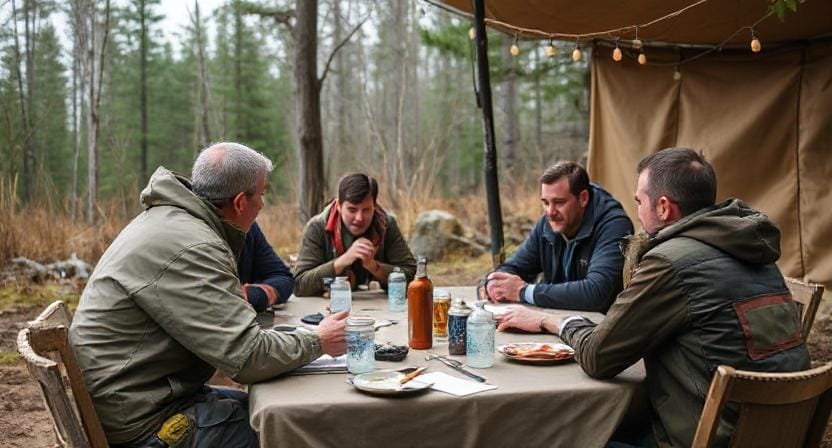
When things go wrong—and trust me, they will—it's better if everyone knows where to meet up afterward instead of roaming about like lost tourists seeking for Wi-Fi connections.
1. Choose Safe Spots: Pick areas near your home and farther away (in case you have to leave) so that everyone in the family knows exactly where to go if something goes wrong, like when Dad tries to grill without supervision again!
2. Make It Memorable: Use well-known landmarks, like the big oak tree down the street or the strange statue of a chicken wearing sunglasses. This will help even the littlest ones not get lost in all the excitement.
3. Practice makes perfect. Set up frequent drills so that everyone knows where to meet. If you don't, you can end up waiting alone at “the big rock” while everyone else goes to “the big tree.” Believe me, it does happen!
4. Be flexible: Plans may need to change depending on the situation. Being flexible is important because life can toss you curveballs, even ones that are muddy from last night's rainstorm!
Letting Everyone Know
Lastly, and honestly most crucial, you want to make sure that everyone in your family knows what's going on during a crisis! After all, misunderstanding only leads to freak-outs, which is what we're working so hard to prevent here…
1. Make clear rules: Decide ahead of time what information needs to be given right now and what can wait until later. For example, “Dad burned dinner” isn't as essential as “The house is flooding!”
2. Use Group Chats Wisely: When things go wrong, make sure that group chats are just about emergencies. If not, Cousin Lisa's kitten images or Uncle Frank's conspiracy theories will take over the topic, and nobody wants that!
3. Check-ins after the event: After everything has calmed down, hold check-ins so that everyone feels heard and supported emotionally. Sharing experiences helps people bond, especially when things are unpleasant. especially if those experiences include dashing away from squirrels with acorns!
4. Feedback Loop: After events are over, get feedback from each other about how clear and successful the communications were, and then make changes based on that input. Improvement never ends, even when things seem to be going well!
Setting up a family emergency communication system isn’t as scary as it sounds. Sure, it takes a little work at the start, but think of it like cooking dinner—once you have your ingredients ready, it goes smoother.
Start by checking what your family really needs. Do you have little kids who might freak out during a storm? Maybe a plan for them helps. You want to make sure everyone feels safe and knows what to do.
Deciding how you’ll communicate is next. Group texts are handy. Just imagine everyone getting a message at the same time. But some family members might prefer a call or even a note left on the fridge. Keep it simple, whatever works for you all.
Creating lists of important numbers is super useful, too. Like your neighbors, emergency services, and each other. Just in case things go wonky. You might stick that list on the fridge or save it in your phone, so it’s always there.
Don't forget to choose where to meet! Think of a site that everyone can get to, like a big tree in the park or a neighbor's house. It's like playing hide-and-seek in real life. Assigning positions keeps everyone on track.
Keep talking to one another. Let everyone know if anything changes. You may have a family meeting every now and again to go over the strategy. It helps everyone be relaxed.
You can handle any little surprises that come your way if you stay open and connected. Even the raccoons that are hiding behind the bushes! It makes things a little easier to keep your family in the loop. It makes us feel better, which is something we all need sometimes. No drama, just getting ready for whatever life throws our way!
Frequently Asked Questions
Why do families need an emergency communication system?
It helps reduce confusion during crises and ensures everyone knows how to reach each other and where to go.
What should be included in a family contact list?
Include all family members, trusted neighbors, emergency services, and anyone who may assist in a crisis.
Are text messages better than calls during an emergency?
Texts often work better because networks may be overloaded, and texts use less signal strength than calls.
Should families decide on meeting locations ahead of time?
Yes, select nearby and faraway meeting spots so everyone knows where to regroup if separation occurs.
Is assigning roles important?
Yes, assign roles based on who stays calm, who can manage younger children, and who handles communication updates.
How often should the plan be practiced?
Drill at least once or twice a year to help everyone remember their responsibilities and improve the plan.
How often should the communication plan be reviewed?
Review the plan every few months to ensure contact lists, phone numbers, and meeting spots remain current.
Suggested Resources:
Family Emergency Communication Plan
https://www.ready.gov/communication-plan
How To Create An Emergency Communication Plan
https://www.redcross.org/get-help/how-to-prepare-for-emergencies/make-a-plan/emergency-communication-plan.html
Emergency Preparedness Checklist
https://www.fema.gov/media-library/assets/documents/1609

Kevin Collier is a seasoned survivalist and expert in prepping and homesteading, contributing to WiseSurvive.com. With a deep-rooted passion for self-sufficiency and outdoor survival skills, Kevin shares practical advice, strategies, and resources to help individuals prepare for any challenge. His informative articles cover a range of topics, from essential survival techniques to sustainable living practices, empowering readers to thrive in any situation. Whether you're a novice or a seasoned prepper, Kevin's insights will inspire you to take charge of your readiness and build resilience for the future.


